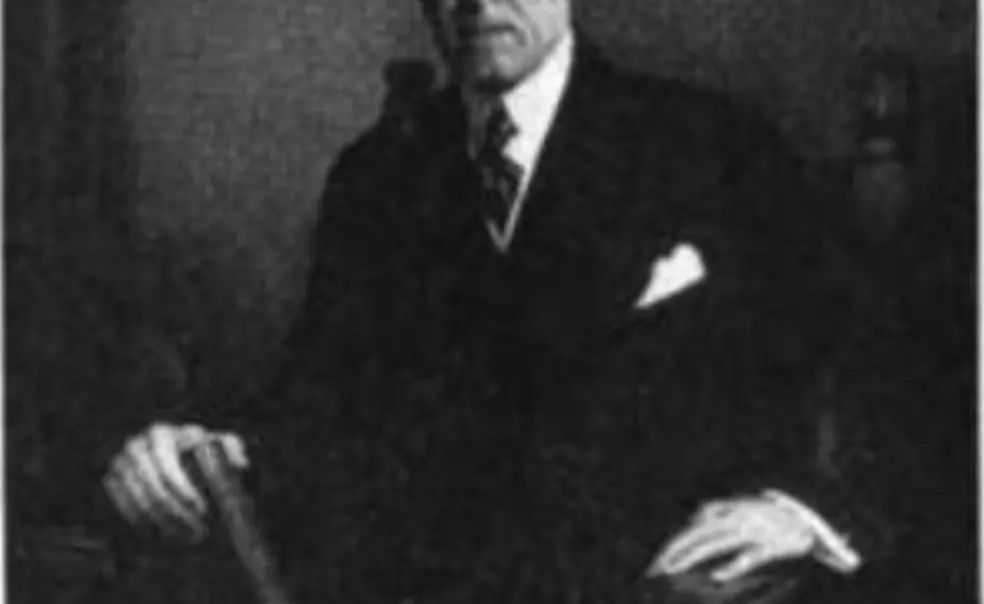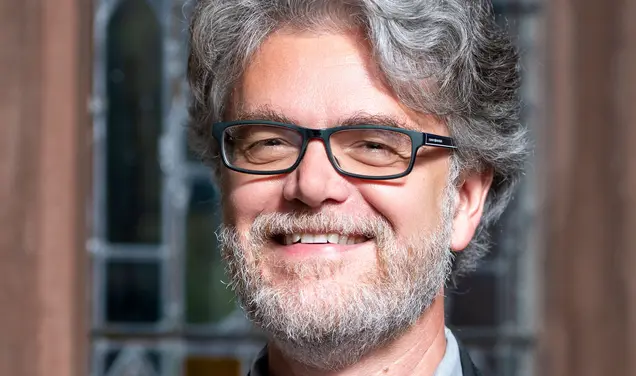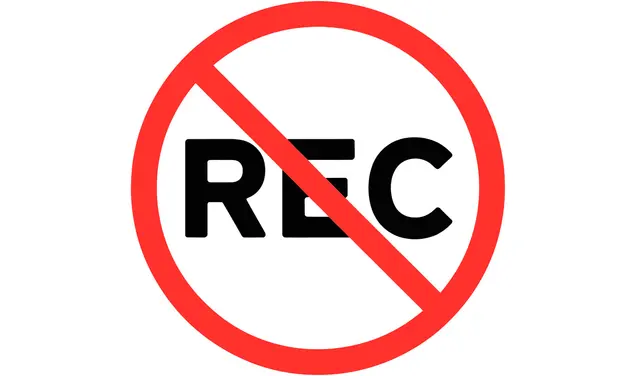A Lasting Memorial to Woodrow Wilson ’79
Enlarged and Strengthened School of Public and International Affairs Receives Top Priority of Third Century Fund
Top priority has been assigned by Princeton University’s Third Century Fund Committee to the financial objective of an enlarged and strengthened School of Public and International Affairs which will be re-named as a lasting memorial to President Woodrow Wilson.
It is the sincere hope of the Third Century Fund Committee that the effort to raise $2,000,000 for this important phase of Princeton’s future development will be completed by June 17, the date of the closing ceremonies of the Bicentennial Year. A resolution authorizing a change of name to the Woodrow Wilson School of Public and International Affairs has been approved by the Board of Trustees and formal dedication awaits only the attainment of its financial objective.
Of the $2,000,000 needed, the sum of $1,500,000 is to be raised to provide additional endowment for the extensive instructional and research program of the school. An additional $500,000 will be required to permit construction of a distinguished new memorial building to be known as Woodrow Wilson Hall.
Although architectural plans are not available at the present time, the building will be specially designed to meet the needs of the training program developed by the School of Public and International Affairs during its seventeen-year history on the Princeton campus. The proposed site for the new home is the corner of Washington Road and Prospect Avenue, just off the main campus and facing the former office of President Wilson over the archway of ’79 Hall.
When the School of Public and International Affairs was first established at Princeton in 1930, the men who drew up its plan of education had one purpose in mind – to encourage young men to take part in public affairs and to give them a training for the public responsibilities of future careers in business, the professions or government.
It is logical that the idea for such a school should have evolved at Princeton, where a spirit of public service has pervaded the campus through two centuries of American history. Names like John Witherspoon, Richard Stockton, Benjamin Rush, James Madison, William Paterson, and Oliver Ellsworth were early manifestations of that pervading spirit of service.
In speaking of the history of the college, President Wilson called it “The Seminary of Statesmen,” and said, “In days quiet and troubled alike Princeton has stood for the nation’s service to produce men and patriots.” These words were uttered fifty years ago, but the record of service rendered by Princeton graduates in high government posts during World War II lends modern day testimony to the weight of the tradition.
The SPIA Program
As its program developed, the School of Public and International Affairs, or SPIA as it is generally known on campus, instituted a plan of study that represented a departure from normal college curricula. As a cooperative venture of the three social science departments, Princeton offered its upperclassmen an opportunity to combine courses in history, politics, and economics as a field for concentration through the SPIA. The plan represented one of the first attempts in American higher education to lower the traditional departmental walls to permit study of problems rather than subjects at an undergraduate level.
The enrollment of the school has been limited to the number that can be treated individually so as not to destroy intimate contact between faculty and students. Its proximity to New York, Philadelphia and Washington makes Princeton an ideal location for such a school, and the generous cooperation of government and business officials has proved to be a vital factor in the success of the instructional program.
The most unusual educational device the SPIA has developed is the Conference Method, which has become its most distinctive activity and its primary contribution to the art of training for participation in public affairs.
The conference puts into action a principle of education which Woodrow Wilson emphasized on many occasions. “It is not learning,” he said, “but the spirit of service that will give a college place in the public annals of the nation. It is indispensable, it seems to me, if it is to do its right service, that the air of affairs should be admitted to all its class-rooms.”
A conference duplicates as nearly as possible the way the outside world examines public problems, in, for instance, a meeting of a United Nations commission, a governmental agency, an industrial board of directors, or a city council.
Each undergraduate member of the school takes part in one of the several conferences held each term. The work emphasizes three types of training which he will have an obvious need for in a public affairs career: training, first, in the use of correct methods of fact-finding; second, in effective written and oral presentation of findings; and, third, in the techniques of the conference table.
Each conference is assigned a broad national or international problem for study and investigation. It must recommend a practical solution to the problem based on consideration of the evidence and conflicting points of view. The Faculty consults with individual students on the work, but an undergraduate chairman and commission are charged with its direction.
A Typical Conference
A quick glance at a recent conference offers perhaps the best picture of how a conference works. One held on “United States Policy toward Japan” provides a good example.
The first step was taken by a faculty director who, after consultation, drew up a summary of the problem. This summary was discussed at an open meeting of the students in the conference and a final version was prepared. For the next three weeks the conference members read intensively in background literature, devoting themselves particularly to three aspects of the problem: Historical Background of the War; Defeat and Occupation of Japan; Underlying Issues in Post-War Policy.
Meanwhile, the participants met in small groups with faculty members to discuss the import of the background reading. They also talked with the New Zealand Minister to the United States Assistant Secretary of State in charge of occupied areas, each of whom spoke “off the record” and answered questions.
The second phase of the conference began with an open meeting to assign research work. From then on the work was under the direction of a student commission headed by a student chairman. As far as possible each member concentrated on a subject matter of his own choice.
The investigators wrote their reports nine days before they were to testify at an open hearing. In this period each delegate discussed his paper with the English Department to get help in both the written and oral presentation of his findings.
Simultaneously, a series of informal conference sessions was held to make sure all phase of the Japanese problem were covered and to avoid duplication. Other experts from the outside came to Princeton to consult with the conference, including American, Australian, and British authorities on problems of the Far East, State Department officials, and representatives of General MacArthur’s staff.
The conference sent student researchers to New York and Washington to hold personal interviews with authorities. Some attended meetings of the Far Eastern Commission.
Each student presented his findings at a formal session of the conference in a brief oral statement, defended his point of view under cross-examination, and submitted a written report. From these presentations the commissioners wrote their tentative conclusions, all of which received thorough debate at a full meeting. The commissioners then called upon several student investigators for further testimony and drafted a final report.
Under the SPIA program, a conference comprises one-fifth of the student’s course schedule. The other hours are devoted, after careful planning, to courses in history, politics, or economics, and to electives in other fields. In his senior year a student combines independent reading with firsthand investigations as the basis for his thesis. Field study is undertaken during the previous summer, many students going abroad when possible for this purpose.
Developing out of the school’s instructional program and closely related to it are three nationally-recognized research agencies. The Office of Population Research, the Office of Public Opinion Research, and the Princeton Surveys are conducted by faculty members in addition to their teaching duties. Other research centers, such as the University Industrial Relations Section and the Industrial Finance Section, are available to the students.
From the beginning the School has sought advice outside of academic circles in order to improve the training methods it has developed. The advisory council in the School’s formative period included: John W. Davis, Charles Evans Hughes, Albert G. Milbank ’96, Roland S. Morris ’96, Dwight W. Morrow, DeWitt Clinton Poole, William Church Osborn ’83, and Owen D. Young. Recruiting younger men from time to time, the council has constantly taken an active interest in the School’s program.
By availing itself of such counsel and by keeping a close check on the results of its methods, the School of Public and International Affairs has earned a place for itself on the Princeton campus and in American education. Nearly 600 graduates have to date received its certificate and are now engaged in promising careers in government, law, or industry.
This was originally published in the May 9, 1947 issue of PAW.











No responses yet